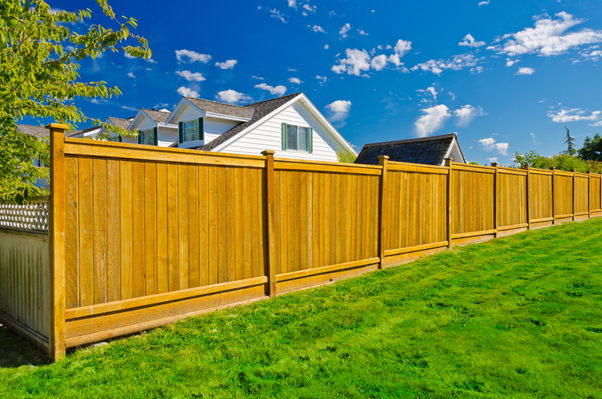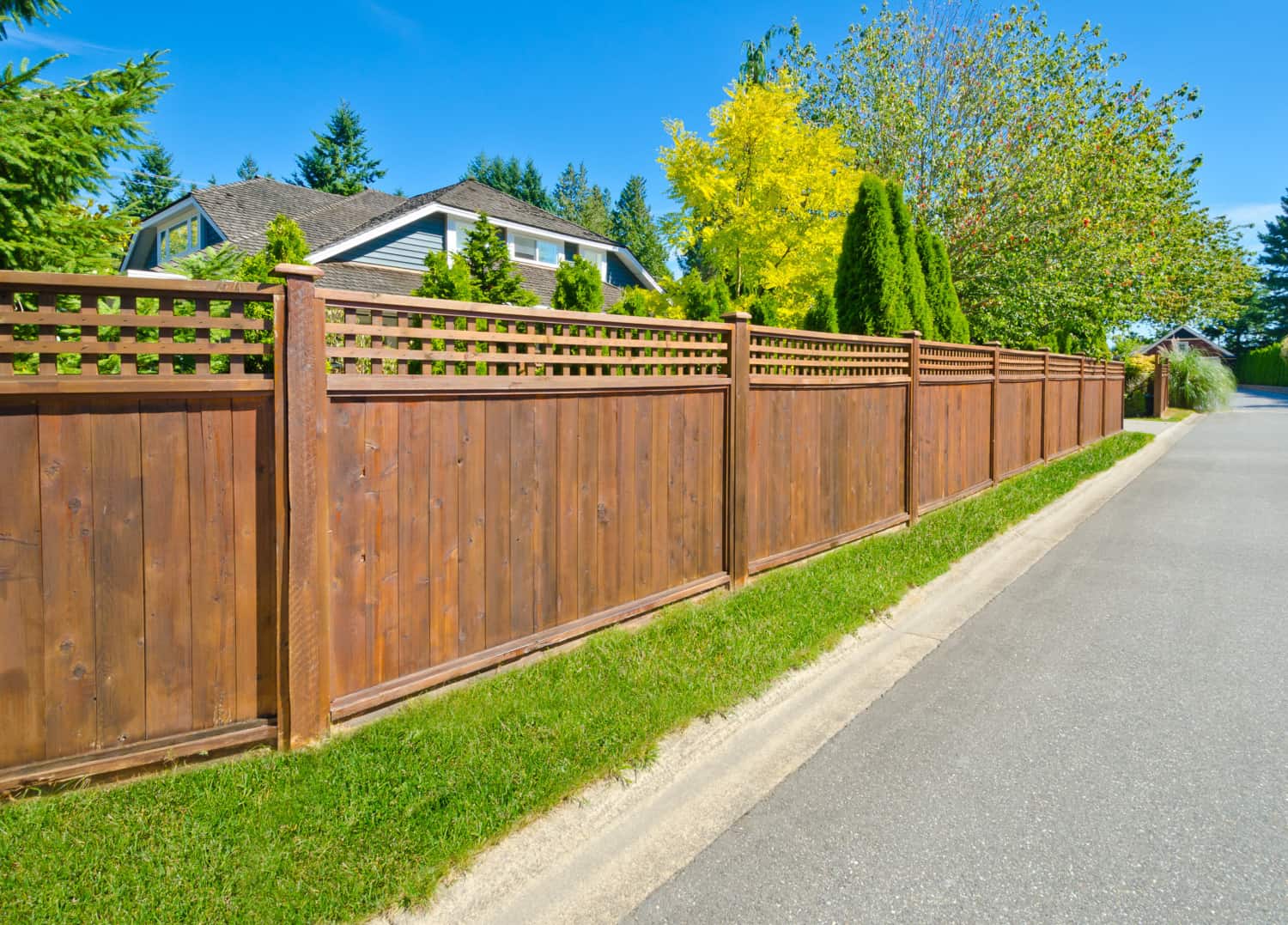All Categories
Featured
Installing a fencing on sloped or unequal terrain may look like a complex task, yet with the right strategies, it's completely possible to accomplish a gorgeous and useful result. Whether you're managing a moderate slope or a steep incline, there are various setup approaches to suit your demands. Right here's whatever you need to understand about mounting a fence on sloped surface.
Obstacles of Installing a Fencing on Sloped Terrain. Sloped or uneven terrain can create some obstacles during fence installment, especially when it comes to making sure the fencing stays degree and safeguard. An appropriately set up fence on sloped land calls for the appropriate method to maintain both architectural honesty and aesthetic allure.
![]()
Finest Fencing Methods for Sloped Surface. When it concerns sloped terrain, two major setup techniques are typically utilized: the step approach and the shelf approach.
Action Installment Technique The step installment approach is optimal for modest inclines. In this style, each section of the fencing is "tipped" to comply with the surface's slope. The individual panels are put at different heights to match the slope of the land, producing a stair-step effect throughout the length of the fence. While this technique may not adhere to the slope completely, it gives a steady and aesthetically attractive choice, particularly when the slope is progressive.
The step installment approach works well with materials such as metal, timber, and plastic, and it's a relatively uncomplicated installment procedure. It may leave spaces at the base of the fence in some locations, depending on the dimension of the incline.
Shelf Installation Approach For steeper slopes, a racked setup may be the much better choice. This technique enables the fencing panels to comply with the natural slope of the land without stepping. In a racked setup, the panels are mounted in a continual line, yet they are adapted to accommodate the incline. This provides a smoother, extra seamless look contrasted to the stepped design.
A racked installment ensures that the fencing preserves a consistent elevation throughout its length while still adapting to the incline. This technique is particularly suited for chain-link or functioned iron fencings, however can also function well with wood or vinyl fences that are adaptable adequate to change to the surface.
Picking the Right Fencing Material for Sloped Land. The selection of product plays a considerable duty in exactly how well the fencing will do on irregular ground. Some products are much more versatile to sloped terrain than others, so it is essential to pick sensibly.
Timber Fencing: Wood is a flexible product and functions well for both tipped and racked installations. It can be customized to fit any kind of slope, though it needs regular upkeep to avoid degeneration, especially on irregular terrain where dampness build-up can be a concern.
Vinyl Fence: Vinyl fencings are long lasting, low-maintenance, and ideal for both tipped and racked setups. Because vinyl is a rigid product, it may not be as adaptable to high slopes, but it still supplies a smooth, continuous line when installed appropriately.
Metal Fencing (Chain-Link or Wrought Iron): Steel fences like chain-link or functioned iron are optimal for sloped surface because they can be changed to adhere to the land's natural slope. Chain-link is specifically flexible and can be mounted in a means that enables the fencing to adhere to the surface's incline without producing voids.
Composite Fencing: Composite fencings, made from a mix of timber fibers and plastic, are also a terrific option for sloped areas. These fencings are tough, weather-resistant, and can be customized for various sorts of terrain.
Exactly How to Prepare for Setup. Prior to beginning a fence setup on uneven surface, it's important to prepare the residential or commercial property properly. Below are a few steps to consider:
Examine the Slope: Begin by gauging the incline of the land. Utilize a level or a gauging tape to establish the slope's extent. This will assist you select the proper installment approach and products.
Clear the Location: Get rid of any barriers such as rocks, trees, or bushes from the location where the fencing will certainly be mounted. This will certainly guarantee smooth installment and protect against damage to the fencing or the bordering landscape.
Check Regional Rules: Guarantee that you recognize any neighborhood building regulations or laws for fencing setups. Some locations have details rules relating to the elevation of fencings, trouble needs, or the kinds of materials permitted.
Choose the Right Fence Type: Based on your slope and the appearance you want, pick the appropriate materials and setup approach. Timber, plastic, and metal all have their advantages, yet you require to choose the one that fits your certain terrain and aesthetic goals.
![]()
Specialist Installment vs. DIY. While it is feasible to set up a fence on uneven or sloped surface on your own, it might be tough, particularly for steep slopes or bigger areas. Hiring an expert fence installer can make certain that the fence is appropriately lined up, stable, and durable. Experts additionally have the experience to examine the land, make use of the appropriate setup techniques, and guarantee that your fence fulfills regional building ordinance.
Conclusion. Installing a fencing on sloped or irregular surface is absolutely possible with the right devices, techniques, and products. Whether you opt for a step or racked installation, or choose one of the most ideal secure fencing product, guaranteeing that the fence complies with the contours of the land while remaining steady is essential. Putting in the time to examine your property, select the appropriate products, and possibly employing an expert can cause a beautifully mounted fencing that includes both privacy and aesthetic interest your residential or commercial property.
Obstacles of Installing a Fencing on Sloped Terrain. Sloped or uneven terrain can create some obstacles during fence installment, especially when it comes to making sure the fencing stays degree and safeguard. An appropriately set up fence on sloped land calls for the appropriate method to maintain both architectural honesty and aesthetic allure.

Finest Fencing Methods for Sloped Surface. When it concerns sloped terrain, two major setup techniques are typically utilized: the step approach and the shelf approach.
Action Installment Technique The step installment approach is optimal for modest inclines. In this style, each section of the fencing is "tipped" to comply with the surface's slope. The individual panels are put at different heights to match the slope of the land, producing a stair-step effect throughout the length of the fence. While this technique may not adhere to the slope completely, it gives a steady and aesthetically attractive choice, particularly when the slope is progressive.
The step installment approach works well with materials such as metal, timber, and plastic, and it's a relatively uncomplicated installment procedure. It may leave spaces at the base of the fence in some locations, depending on the dimension of the incline.
Shelf Installation Approach For steeper slopes, a racked setup may be the much better choice. This technique enables the fencing panels to comply with the natural slope of the land without stepping. In a racked setup, the panels are mounted in a continual line, yet they are adapted to accommodate the incline. This provides a smoother, extra seamless look contrasted to the stepped design.
A racked installment ensures that the fencing preserves a consistent elevation throughout its length while still adapting to the incline. This technique is particularly suited for chain-link or functioned iron fencings, however can also function well with wood or vinyl fences that are adaptable adequate to change to the surface.
Picking the Right Fencing Material for Sloped Land. The selection of product plays a considerable duty in exactly how well the fencing will do on irregular ground. Some products are much more versatile to sloped terrain than others, so it is essential to pick sensibly.
Timber Fencing: Wood is a flexible product and functions well for both tipped and racked installations. It can be customized to fit any kind of slope, though it needs regular upkeep to avoid degeneration, especially on irregular terrain where dampness build-up can be a concern.
Vinyl Fence: Vinyl fencings are long lasting, low-maintenance, and ideal for both tipped and racked setups. Because vinyl is a rigid product, it may not be as adaptable to high slopes, but it still supplies a smooth, continuous line when installed appropriately.
Metal Fencing (Chain-Link or Wrought Iron): Steel fences like chain-link or functioned iron are optimal for sloped surface because they can be changed to adhere to the land's natural slope. Chain-link is specifically flexible and can be mounted in a means that enables the fencing to adhere to the surface's incline without producing voids.
Composite Fencing: Composite fencings, made from a mix of timber fibers and plastic, are also a terrific option for sloped areas. These fencings are tough, weather-resistant, and can be customized for various sorts of terrain.
Exactly How to Prepare for Setup. Prior to beginning a fence setup on uneven surface, it's important to prepare the residential or commercial property properly. Below are a few steps to consider:
Examine the Slope: Begin by gauging the incline of the land. Utilize a level or a gauging tape to establish the slope's extent. This will assist you select the proper installment approach and products.
Clear the Location: Get rid of any barriers such as rocks, trees, or bushes from the location where the fencing will certainly be mounted. This will certainly guarantee smooth installment and protect against damage to the fencing or the bordering landscape.
Check Regional Rules: Guarantee that you recognize any neighborhood building regulations or laws for fencing setups. Some locations have details rules relating to the elevation of fencings, trouble needs, or the kinds of materials permitted.
Choose the Right Fence Type: Based on your slope and the appearance you want, pick the appropriate materials and setup approach. Timber, plastic, and metal all have their advantages, yet you require to choose the one that fits your certain terrain and aesthetic goals.

Specialist Installment vs. DIY. While it is feasible to set up a fence on uneven or sloped surface on your own, it might be tough, particularly for steep slopes or bigger areas. Hiring an expert fence installer can make certain that the fence is appropriately lined up, stable, and durable. Experts additionally have the experience to examine the land, make use of the appropriate setup techniques, and guarantee that your fence fulfills regional building ordinance.
Conclusion. Installing a fencing on sloped or irregular surface is absolutely possible with the right devices, techniques, and products. Whether you opt for a step or racked installation, or choose one of the most ideal secure fencing product, guaranteeing that the fence complies with the contours of the land while remaining steady is essential. Putting in the time to examine your property, select the appropriate products, and possibly employing an expert can cause a beautifully mounted fencing that includes both privacy and aesthetic interest your residential or commercial property.
Latest Posts
Why Trust NAPA AutoCare? Montclare Auto Repair Delivers the Best Service
Published Apr 20, 25
2 min read
Vision Center South – Troy’s Premier Optometrists Await – Book Now!
Published Apr 20, 25
2 min read
Change Your Home with Resilient Hardwood Flooring from Carpet Interiors Floor & Home
Published Apr 19, 25
1 min read
More
Latest Posts
Why Trust NAPA AutoCare? Montclare Auto Repair Delivers the Best Service
Published Apr 20, 25
2 min read
Vision Center South – Troy’s Premier Optometrists Await – Book Now!
Published Apr 20, 25
2 min read
Change Your Home with Resilient Hardwood Flooring from Carpet Interiors Floor & Home
Published Apr 19, 25
1 min read